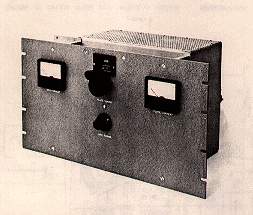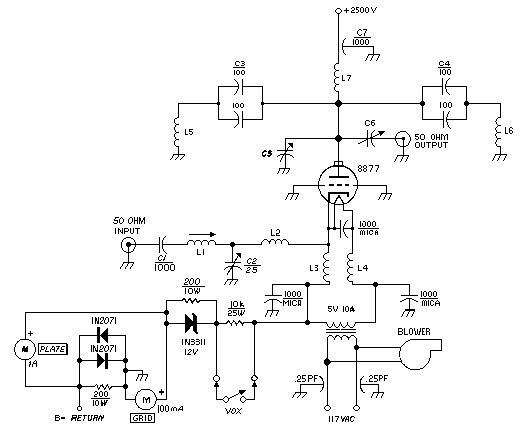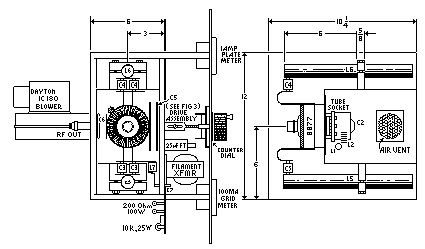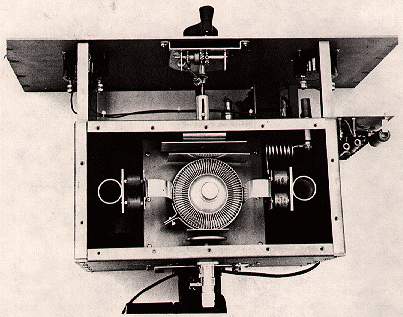tube placed at the center (fig. 2). This type of tuned circuit has
several advantages. A quarter-wave circuit would normally be preferred
because of its greater bandwidth, but I wanted to use easily obtainable
standard copper water pipe as the center conductor of the transmission
line tank circuit. The resulting high-impedance transmission line would
make a quarter-wave plate tank circuit physically short and difficult to
handle.
In addition, the heavy rf current that flows on the tube seals and
control grid would, in the process of charging up the output capacitance
to the plate voltage swing, tend to concentrate on one side of the tube
if a single-ended quarter-wave circuit were used. This current con-
centration would cause localized heating of the tube. The best tuned
circuit configuration to minimize this effect is a symmetrical cylindar-
ical coaxial cavity. Unfortunately, this type of cavity is complex and
difficult to build.
A practical compromise is to use two quarter-wave lines connecting
to opposite sides of the tube. It is interesting to note that each of
the two quarter-wave lines is physically longer than if only one quarter
wave line were used. This is because only one-half of the tube output
capacitance loads each of the two lines.
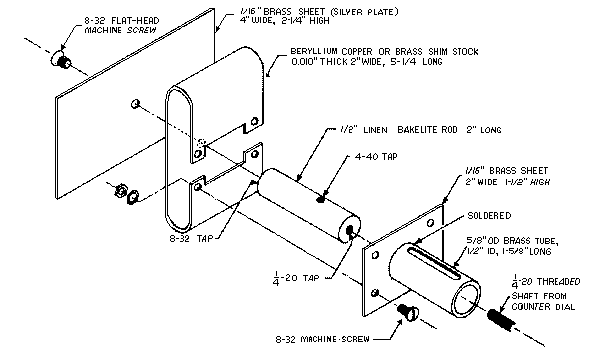
fig. 3. Variable plate portion of plate-tuning capacitor C3. This arrangement permits the
capacitor to be adjusted under full power without "jumpy" tuning as there are no moving or
sliding contacts which carry heavy rf current.
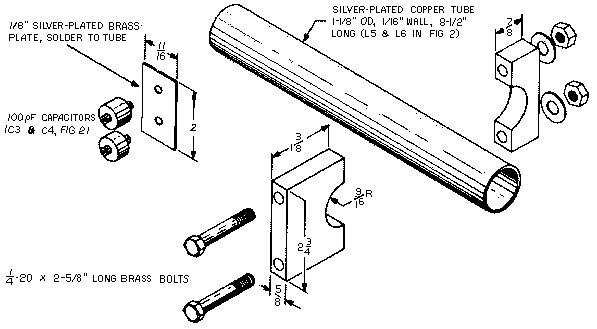
fig. 4. Details of plate lines L5 and L6. Copper tubes are standard water pipe.
Resonance is established by a moving plate capacitor (C5); antenna
loading is accomplished by a second capacitor (C6) placed at the anode
of the 8877. Output power is coupled from the plate circuit through the
series capacitor into a 50-ohm output. In the top-view photo tuning cap-
acitor C5 is at the front of the compartment; variable loading capacitor
C6 is at the rear. The plate choke is visible in the front corner.
construction
The two-meter amplifier is built in an enclosure measuring 10 1/4
X 12 X 6 1/4 inches. The 8877 socket is centered on a 6 X 6 subchassis
plate. A centrifugal blower forces cooling air into the under-chassis
area; the air escapes through the 2-5/8-inch diameter socket hole.
The plate tuning mechanism is shown in fig. 3. This simple
apparatus will operate with any variable plate capacitor, providing a
back and forth movement of about one inch.It is driven by a counter dial
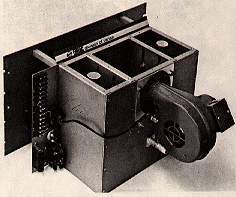
Rear of amplifier showing blower and coaxial output connector. Amplifier is upside down
in this photograph.
and provides a quick inexpensive and easy means of driving a vhf capacitor. The ground return path for the grounded capacitor plate is through a wide low-inductance beryllium-copper or brass shim stock which provides spring tension for the drive mechanism.
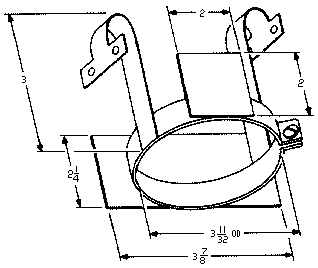
fig. 5. Anode clamp assembly for the two-meter linear amplifier.
The variable output coupling capacitor is located at the side of
the 8877 anode. The type-N coaxial fitting is connected to the moveable
plate of the coupling capacitor. The fitting is centered in a special
tubular assembly which allows the wole connector to slide in and out of
the chassis, allowing the variable plate of the coupling capacitor to
move with respect to the fixed plate mounted on the tube anode clamp.
When the final loading adjustment has been set the sliding fitting is
clamped by an arrangement similar to the slider on a variable wire-wound
resistor.
The length of the plate-line inductors (L5 and L6) is adjusted by
means of dural blocks placed at the shorted end of the line (fig. 4).
The position of the blocks is determined by setting capacitor C5 at its
lowest value and adjusting line lengths so that the plate circuit
resonates at 148 MHz with the 8877 in the socket.
The plate rf choke is mounted between the junction of one plate
strap and a pair of the dual blocking capacitors; the high-voltage
feed-through capacitor is mounted to the front wall of the plate
compartment. The blocking capacitors are rated for rf service, and
inexpensive tv-type capacitors are not recommended for this amplifier.
A short chimney to direct cooling air from the socket through the anode
of the 8877 is made from Teflon and clamped between the chassis deck and
the anode strap.*
operation
Amplifier operation is completely stable with no parasitics. The
unit tunes up exactly as if it were on the "dc bands." As with all
grounded-grid amplifiers excitation should never be applied when plate
voltage is removed from the amplifier.
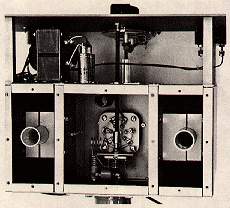
Underchassis view of the two-meter amplifier. The cathode input circuit he center
compartment. Plate lines are visible in the side compartments.
The first step is to grid-dip the input and output circuits to
near-resonance with the 8877 in the socket. A swr meter should be
placed in series with the input line so the input network may be
adjusted for lowest swr.
Tuning and loading follows the same sequence as any standard
grounded-grid amplifier. Connect a swr indicator at the output and apply
a small amount of rf drive. Quickly tune the plate circuit to resonance.
table 1. Performance data for the 144-MHz power amplifier under the conditions
most suitable for amateur ssb (2000 watts PEP) and cw (1000 watts).
Plate voltage 3000 V 2500 V 2500 V
Plate current (single tone) 667 mA 800 mA 400 mA
Plate current (idling) 54 mA 44 mA 44 mA
Grid voltage -12 V -12 v -12 V
Grid current (single tone) 46 mA 50 mA 28 mA
Power input 2000 W 2000 W 1000 W
Power output 1240 W 1230 W 680 W
Efficiency (apparent) 62 % 62 % 68 %
Drive power 47 W 67 W 19 W
Power gain 13.8 dB 12.6 dB 15.5 dB
The cathode circuit should now be resonated. The swr between the exciter
and the amplifier will not necessarily be optimum. Final adjustment of
the cathode circuit for minimum swr should be done at full power
because the input impedance of a cathode-driven amplifier is a function
of the plate current of the tube.
Increase the rf drive in small increments along with output
coupling until the desired power level is reached. By adjusting the
drive and loading together it will be possible to attain the operating
conditions given in the performance chart in table 1. Always tune for
maximum plate efficiency: maximum output power for minimum input power.
It is quite easy to load heavily and underdrive to get the desired
power input but power output will be down if this is done.
I would like to thank K6DC for his help in adjusting and determin-
ing the operating conditions of this two-meter amplifier.
*Detailed drawings of the anode clamp, plate resonator and blocking capacitor assembly,
and variable plate tuning capacitor (C5) are available from R. Sutherland, EIMAC
Division of Varian, 301 Industrial Way, San Carlos, Califirnia 94070. Ask for drawing
numbers 168658, 168648, and 168647.
references
1. R. Sutherland, W6UOV, "Two Kilowatt Linear Amplifier for Six Meters,"
Ham Radio, February, 1971, page 16.
2. R. Barber, R Rinaudo, W. Orr, R. Sutherland, " Modern Circuit Design for VHF Transmitters,"
CQ, November, December, 1965.
ADDENDUM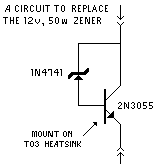
This circuit may be substituted for the hard to find 1N3311 zener biasing diode shown in the schematic circuit of fig.1
Mount the 2N3055 on a TO3
style heatsink using insulating hardware.
